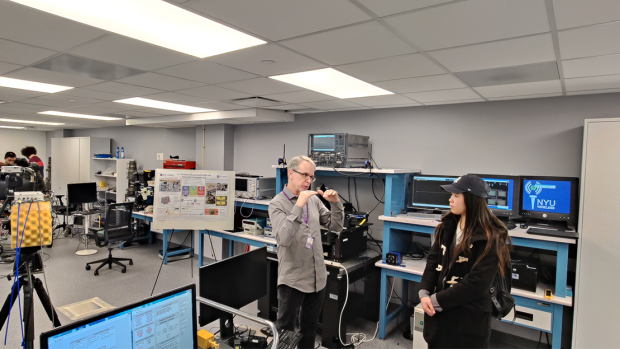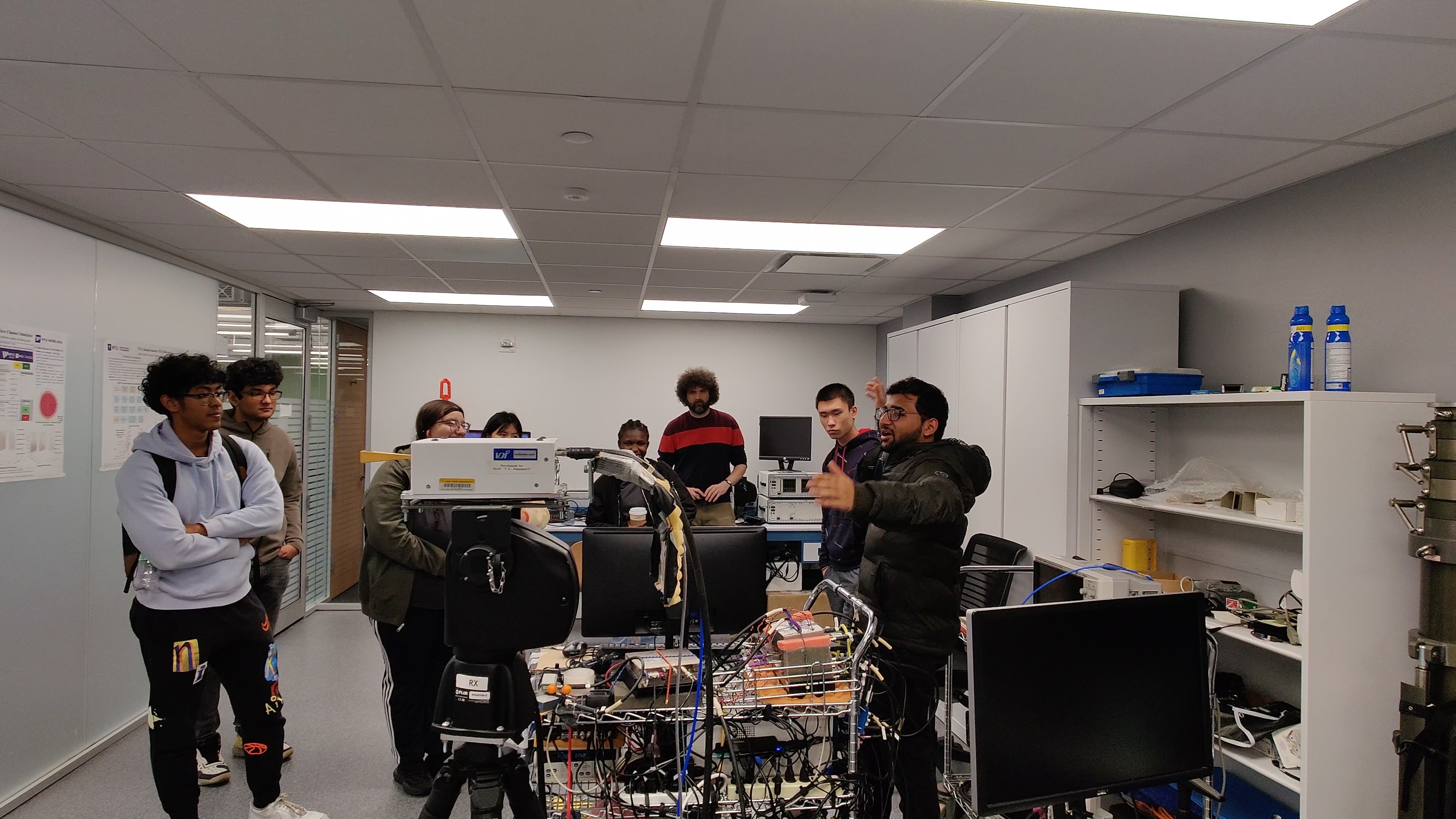THz-Lab at NYU WIRELESS gets a group of eager visitors

Professor Michael Knox (center) describes THz device measurements in the THz-Lab
NYU Tandon’s Vertically Integrated Projects (VIP) program involves long-term multidisciplinary initiatives that emphasize hands-on research and innovation. Participating students develop valuable skills, make practical contributions, and explore a wide range of fields from automotive engineering to urban farming.
In early May, a group of VIP students had the chance to expand their horizons even further when they toured the NYU Terahertz measurement facility (THz-Lab), a next-generation lab for cutting-edge terahertz (THz) measurements and research funded by the $3 million NSF: Major Research Instrumentation (MRI) grant. The students were given a rare glimpse into the world of THz technology, a rapidly growing field with the potential to revolutionize many aspects of our lives.

The THz-Lab, located at the NYU WIRELESS research center, is one of the most advanced research facilities of its kind in the world. Its state-of-the-art equipment currently enables researchers to study the properties of circuits, devices, and materials up to 500 GHz, and the lab is set to expand to 1 THz and beyond with future enhancements. (GHz, short for gigahertz, is a unit of frequency equal to one billion hertz; THZ or terahertz, is equal to one trillion hertz.)
During their visit, the visibly impressed VIP undergrads examined the various types of THz measurement equipment and semiconductor fabrication techniques used by researchers in the field and heard about studies on sub-THz radio propagation, channel modeling, THz circuits, and antennas.
"Terahertz measurement and circuit design are valuable skills for students going into industry or pursuing research," Professor of Electrical Engineering Michael Knox, Co-PI at the THz-Lab, said. "It's important for the next generation of scientists and engineers to have hands-on experience in this field, and we're delighted to have had the opportunity to host the NYU undergraduate students at the THz-Lab."
Professor Theodore Rappaport, the founding director of NYU WIRELESS and PI of the THz-Lab, emphasized the critical importance of exposing the next generation of researchers and engineers to THz technology, since THz frequencies offer tremendous potential for breakthroughs in fields such as wireless communications, sensing, and imaging—and progress is possible only with innovative research. "We need bright minds and fresh perspectives to tackle the challenges and opportunities of THz technology," he said. "I'm thrilled that the NYU VIP program students had the chance to see firsthand the exciting work being done at the THz-Lab, and I'm confident that they will go on to do great things in their careers."

By Dipankar Shakya




